Filter by

Writing the Yugoslav Wars Literature, Postmodernism, and the Ethics of Repre…
In Writing the Yugoslav Wars, Dragana Obradović analyses how the Yugoslav wars of secession helped shape the region’s literary culture. Obradović argues that the crisis of the country’s disintegration posed an ethical challenge to self-identified postmodernists. This book takes a transnational approach to literatures of the former Yugoslavia that have been, since the 1990s, studied separa…
- Edition
- -
- ISBN/ISSN
- 9781487514693
- Collation
- -
- Series Title
- -
- Call Number
- -
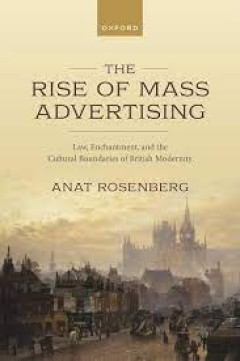
The Rise of Mass Advertising Law, Enchantment, and the Cultural Boundaries o…
This book is a first cultural legal history of advertising in Britain, tracing the rise of mass advertising circa 1840–1914 and its legal shaping. The emergence of this new system disrupted the perceived foundations of modernity. The idea that culture was organized by identifiable fields of knowledge, experience, and authority came under strain as advertisers claimed to share values with the …
- Edition
- -
- ISBN/ISSN
- 9780192858917
- Collation
- -
- Series Title
- -
- Call Number
- -
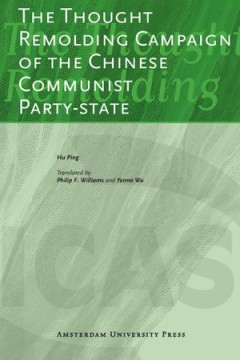
The Thought Remolding Campaign of the Chinese Communist Party-state
In its comprehensive analysis of a wide range of primary and secondary sources in both Chinese and Western languages, this authoritative work stands as the definitive study of the theory, implementation and legacy of the Chinese Communist Party's thought-remolding campaign. This decades-long campaign involved the extraction of confessions from millions of Chinese citizens suspected of heterodox…
- Edition
- -
- ISBN/ISSN
- 9789089644107
- Collation
- -
- Series Title
- -
- Call Number
- 909.82 PIN t

Bathroom Songs : Eve Kosofsky Sedgwick As a Poet
Bathroom Songs: Eve Kosofsky Sedgwick as a Poet is the first book of essays to consider the poetry of one of the twentieth- and early twenty-first-century’s most important literary, affect, and queer theorists. Acclaimed as one of the “truly innovative” poets of her generation by Maud Ellmann, Sedgwick’s work as a poet is, perhaps, less well known, but is no less compelling than her gro…
- Edition
- -
- ISBN/ISSN
- 9781947447301
- Collation
- 306 halaman
- Series Title
- -
- Call Number
- 920 EDW b
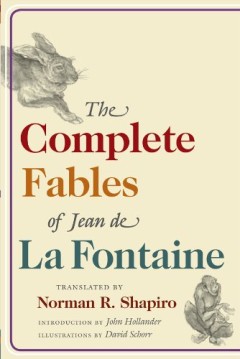
The Complete Fables of Jean de la Fontaine
This edition of Jean de La Fontaine’s fables includes an English translation published alongside the French text. Norman Spector adapted the French text from the 1883-85 edition by Henri Regnier, adding four tales from the 1962 edition by Georges Couton. Spector’s translation is in rhymed verse, and remains faithful to the original not only in metrical patterns and rhyme schemes but also in…
- Edition
- -
- ISBN/ISSN
- 9780810139640
- Collation
- 504 halaman
- Series Title
- -
- Call Number
- 800 LAF c
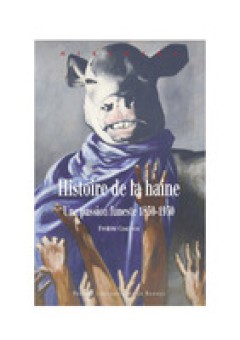
Histoire de la haine: Une passion funeste 1830-1930
La haine possède une histoire : ses expressions, ses modalités, ses logiques, ses objets et ses effets ne sont ni identiques ni immuables. Cet essai replace cette passion funeste dans son époque et cerne ses raisons évoquées par les contemporains. Si la haine est à sa manière une forme de rationalité permettant de se mouvoir dans l’univers social, elle est une « figure du pensable »…
- Edition
- -
- ISBN/ISSN
- 9782753559530
- Collation
- -
- Series Title
- -
- Call Number
- -
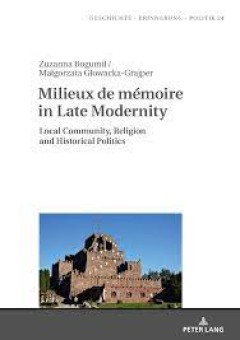
Milieux de mémoire in Late Modernity Local Communities, Religion and Histor…
This book shows how vernacular communities commemorate their traumatic experiences of the Second World War. Despite having access to many diverse memory frameworks typical of late modernity, these communities primarily function within religious memory frameworks. The book also traces how they reacted when their local histories were incorporated into the remembrance practices of the state. The a…
- Edition
- -
- ISBN/ISSN
- 9783653065091
- Collation
- -
- Series Title
- -
- Call Number
- -
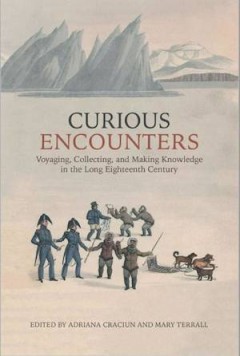
Curious Encounters : Voyaging, Collecting, and Making Knowledge in the Long E…
Curious Encounters uncovers a rich history of global voyaging, collecting, and scientific exploration in the long eighteenth century. Voyagers from Greenland to the Ottoman empire crossed paths with French, British, Polynesian, and Spanish travelers across the world, trading objects and knowledge for diverse ends. The essays in this collection restore our understanding of the encounters between…
- Edition
- -
- ISBN/ISSN
- 9781487503673
- Collation
- -
- Series Title
- -
- Call Number
- 800 CRA c
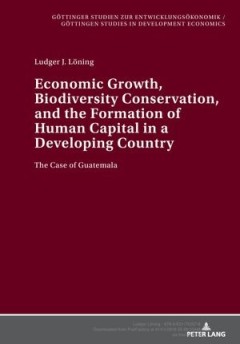
Economic Growth, Biodiversity Conservation, and the Formation of Human Capita…
Can education play a role in fostering economic growth and simultaneously decrease pressure on forests? The aim of this study is to show that it can. Human capital formation is a key element in a development strategy that includes natural resource conservation within the framework of sustained economic growth and poverty alleviation. Consequently, it is not by chance that Guatemala is experienc…
- Edition
- -
- ISBN/ISSN
- 9783631526071
- Collation
- 266 halaman
- Series Title
- -
- Call Number
- 330 LON e

Adulterous Nations : Family Politics and National Anxiety in the European Novel
In Adulterous Nations, Tatiana Kuzmic enlarges our perspective on the nineteenth-century novel of adultery and how it often served as a metaphor for relationships between the imperial and the colonized. In the context of the long-standing practice of gendering nations as female, the novels discusse—Eliot's Middlemarch, Fontane's Effi Briest, and Tolstoy's Anna Karenina, along with Enoa's The …
- Edition
- -
- ISBN/ISSN
- 9780810133983
- Collation
- -
- Series Title
- -
- Call Number
- 800 KUZ a
 Computer Science, Information & General Works
Computer Science, Information & General Works  Philosophy & Psychology
Philosophy & Psychology  Religion
Religion  Social Sciences
Social Sciences  Language
Language  Pure Science
Pure Science  Applied Sciences
Applied Sciences  Art & Recreation
Art & Recreation  Literature
Literature  History & Geography
History & Geography